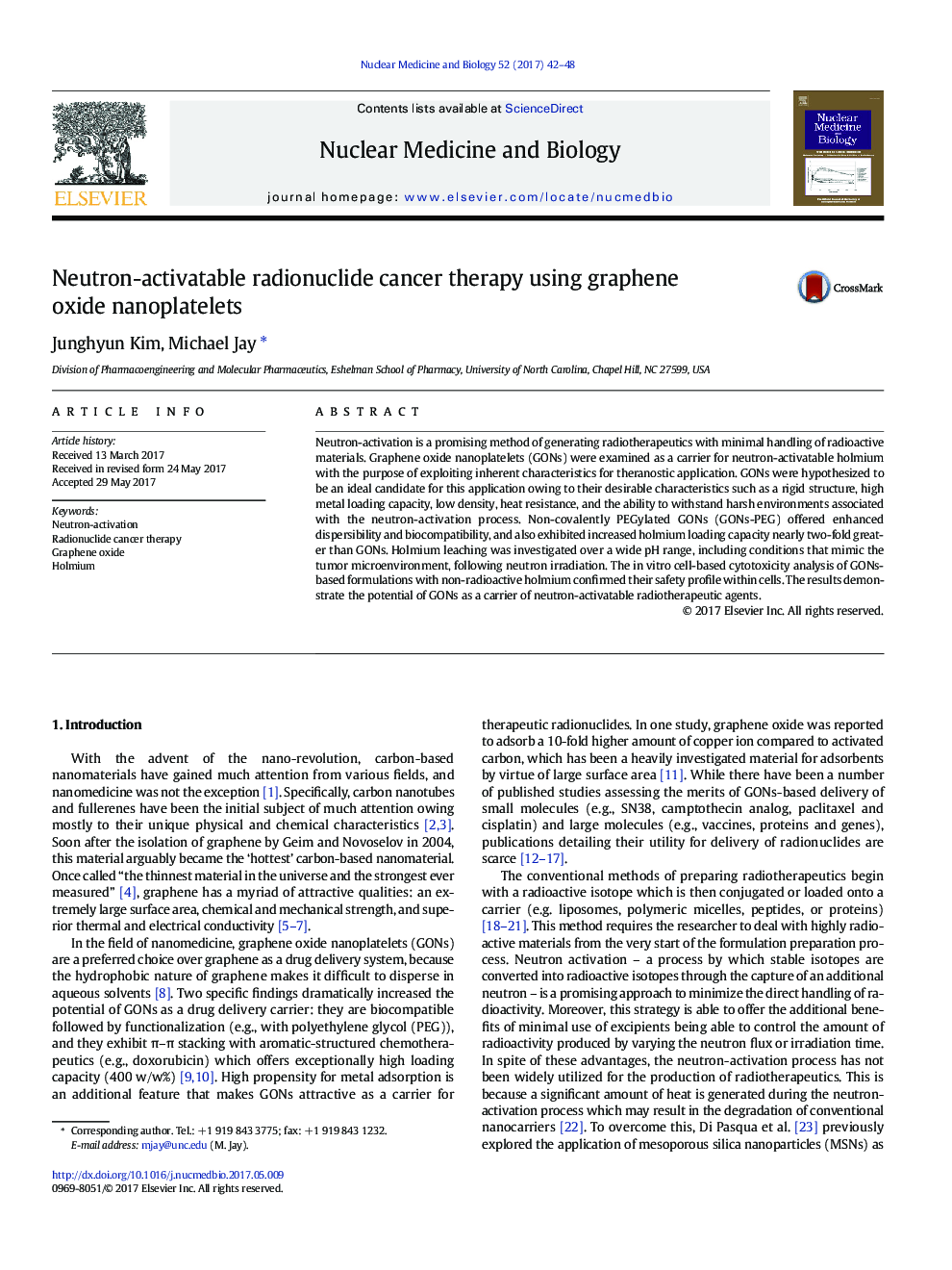| Article ID | Journal | Published Year | Pages | File Type |
|---|---|---|---|---|
| 5529054 | Nuclear Medicine and Biology | 2017 | 7 Pages |
Neutron-activation is a promising method of generating radiotherapeutics with minimal handling of radioactive materials. Graphene oxide nanoplatelets (GONs) were examined as a carrier for neutron-activatable holmium with the purpose of exploiting inherent characteristics for theranostic application. GONs were hypothesized to be an ideal candidate for this application owing to their desirable characteristics such as a rigid structure, high metal loading capacity, low density, heat resistance, and the ability to withstand harsh environments associated with the neutron-activation process. Non-covalently PEGylated GONs (GONs-PEG) offered enhanced dispersibility and biocompatibility, and also exhibited increased holmium loading capacity nearly two-fold greater than GONs. Holmium leaching was investigated over a wide pH range, including conditions that mimic the tumor microenvironment, following neutron irradiation. The in vitro cell-based cytotoxicity analysis of GONs-based formulations with non-radioactive holmium confirmed their safety profile within cells. The results demonstrate the potential of GONs as a carrier of neutron-activatable radiotherapeutic agents.
Graphical abstractDownload high-res image (207KB)Download full-size image
